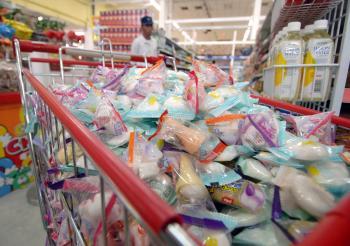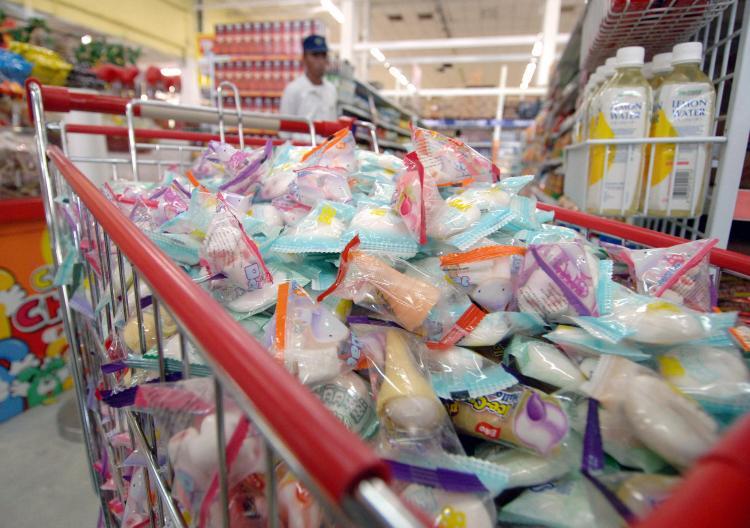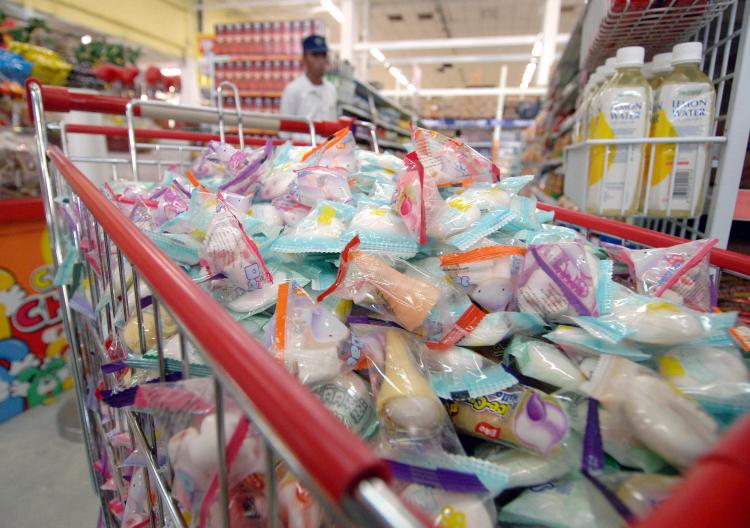The United Nations food standards body set new standards on melamine in food on July 6. The standards control amounts of melamine in baby formula, animal food, and other food products. It aims to prevent dangerous food contamination by the toxic chemical.
Melamine is an industrial substance which is used in several processes, including the fabrication of plastics used for dishware—so through contact, trace amounts inevitably get into food. Small amounts of melamine are not considered a health threat, yet in high concentrations, it becomes toxic.
The maximum level of melamine permitted in infant formula is set at 1 milligram per kilogram (0.0000353 ounces per 2.2 pounds). In other food and in animal feed, the maximum level is set at 2.5 milligrams of melamine per kilogram.
The melamine standards were set by the Codex Alimentarius Commission. The commission sets international food standards, protect the health of consumers, and to guarantee fair practices in international food trade. It was established in 1963 by the FAO (Food and Agriculture Organization of the United Nations) and the WHO (World Health Organization).
In addition to melamine standards, the commission set several others. It put forth new hygienic measures to serve as guidelines for production, harvesting, packing, processing, storage, distribution, marketing, and consumer education.
New measures have also been adopted for sampling food, inspection, and control analysis. The commission has also taken into account the current increase of illnesses caused by Vibrio—several bacterial species that can cause food-borne infection—which is typically caused by eating undercooked seafood. New measures were set on how to control the bacteria and decrease the risks.
By adopting new limits on melamine, tests can be run to check whether the food comes from modern biotechnology or authenticate food varieties.
Two years ago in China, melamine was added to milk products, including baby formula, which killed at least six children, caused 860 to be hospitalized, and which caused an estimated 300,000 to become ill.
In the beginning of this year, melamine-tainted milk products appeared again in China. High levels of the toxic substance was found by the provincial Quality Control Department in ice cream produced by Liaoning Yachao Food Corporation, as published online by the Liaoning Province Health Bureau.
Melamine is an industrial substance which is used in several processes, including the fabrication of plastics used for dishware—so through contact, trace amounts inevitably get into food. Small amounts of melamine are not considered a health threat, yet in high concentrations, it becomes toxic.
The maximum level of melamine permitted in infant formula is set at 1 milligram per kilogram (0.0000353 ounces per 2.2 pounds). In other food and in animal feed, the maximum level is set at 2.5 milligrams of melamine per kilogram.
The melamine standards were set by the Codex Alimentarius Commission. The commission sets international food standards, protect the health of consumers, and to guarantee fair practices in international food trade. It was established in 1963 by the FAO (Food and Agriculture Organization of the United Nations) and the WHO (World Health Organization).
In addition to melamine standards, the commission set several others. It put forth new hygienic measures to serve as guidelines for production, harvesting, packing, processing, storage, distribution, marketing, and consumer education.
New measures have also been adopted for sampling food, inspection, and control analysis. The commission has also taken into account the current increase of illnesses caused by Vibrio—several bacterial species that can cause food-borne infection—which is typically caused by eating undercooked seafood. New measures were set on how to control the bacteria and decrease the risks.
By adopting new limits on melamine, tests can be run to check whether the food comes from modern biotechnology or authenticate food varieties.
Two years ago in China, melamine was added to milk products, including baby formula, which killed at least six children, caused 860 to be hospitalized, and which caused an estimated 300,000 to become ill.
In the beginning of this year, melamine-tainted milk products appeared again in China. High levels of the toxic substance was found by the provincial Quality Control Department in ice cream produced by Liaoning Yachao Food Corporation, as published online by the Liaoning Province Health Bureau.



